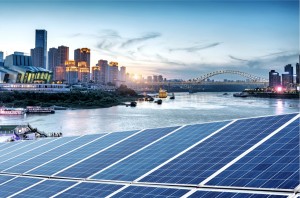On January 26, the National Energy Administration released the statistics of the national power industry in 2023. By the end of December, the country’s cumulative installed power generation capacity was about 2.92 billion kilowatts, an increase of 13.9 percent year-on-year.
Among them, the PV installed capacity of solar power generation was about 609.49 GW, an increase of 55.2%; The installed capacity of wind power was approximately 441.34GW, an increase of 20.7%. In 2023, the new PV installed capacity reached 216.88GW, an increase of 148.12%, which is almost the sum of the previous four years. 2019-2022, China’s new PV installed capacity is 30.11GW, 48.2GW, 54.88GW, 87.41GW.
Last year, the prices of the four main industrial chains of photovoltaic silicon materials, silicon wafers, cells and modules fell across the board. At the beginning of 2023, the price of silicon was about 180,000 yuan/ton, and dropped to 60,000 yuan/ton at the end of the year, a decrease of nearly 70%. Silicon chips from 4-5 yuan/piece at the beginning of the year, as of the end of the year 2-3 yuan/piece, a decline of 40 to 50 percent. Conduction to the middle and lower reaches, the P-type battery dropped from 0.8 yuan /W at the beginning of the year to 0.36 yuan /W at the end of the year, a decrease of more than 50%. The price of components during the year also fell by nearly 50%, and the average price per watt at the end of the year was less than 1 yuan.
Since the beginning of this year, the component bidding price is often low. On January 20, Huaneng 2024 10 GW PV module framework agreement procurement bid opened, a total of 47 enterprises participated in the bid, the lowest offer to a new low in the industry, up to 0.79 yuan /W.
Many people in the industry have expressed concern about the amount of new PV installations in 2024. A photovoltaic module company said to the interface news that last year’s data was very optimistic, but there is a hidden danger of overdrawing this year’s quota.
Post time: Jan-28-2024
